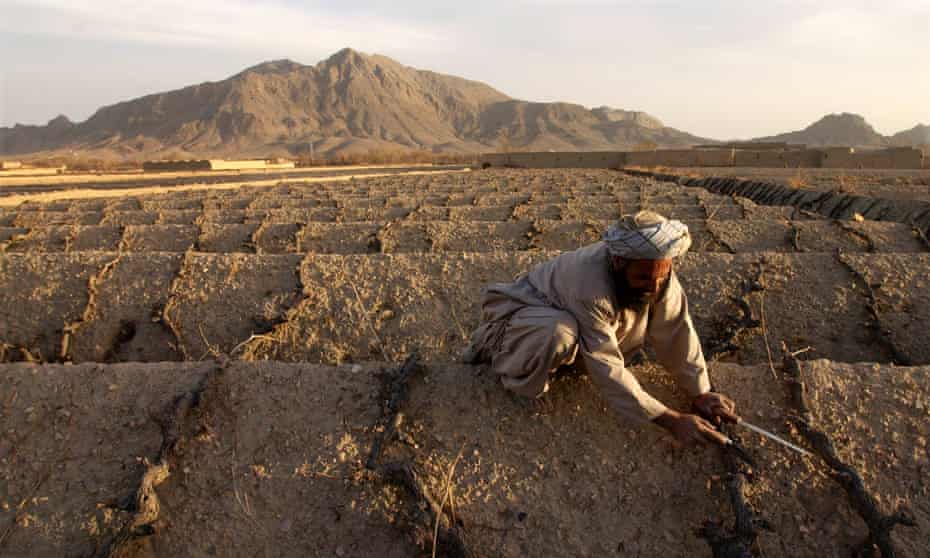‘The challenge for us now is drought, not war’: livelihoods of millions of Afghans at risk

After years caught in the crossfire between the Taliban and security forces, farmers in Kandahar face a new threat, as water sources dry up
Last modified on Tue 21 Sep 2021 14.40 EDT
The war in Afghanistan might be over but farmers in Kandahar’s Arghandab valley face a new enemy: drought.
It has hardly rained for two years, a drought so severe that some farmers are questioning how much longer they can live off the land.
Mohammed Rahim, 30, grew up working on a farm along with his father and grandfather in the Arghandab district of Afghanistan’s southern province. Famous for its fruit and vegetables, the area is known as the bread basket of Kandahar.
Like most in the valley, Rahim’s family relies solely on farming. “The fighting has just stopped. Peace has returned,” Rahim says. “But now we face another war: drought.
“Now we have to dig deep to pump water out of the land. It has been two years, there has been little rain and we have a drought here. I don’t know if our coming generations can rely on farming the way our ancestors used to do.”
Pir Mohammed, 60, has been a farmer for more than four decades. “Not long ago, there were water channels flowing into the farm and we were providing the remaining water to other farmers,” says Mohammed. “Before, the water was running after us, flowing everywhere – but now we are running after water.”
The water used to come free from the river but now the daily diesel cost for the water pump is at least 2,500 Afghani (GBP21).
“We don’t make any profit. We are in loss, rather. Instead, we are using our savings. But we don’t have any other option as we do it for survival,” says Mohammed. “However, the scarcity of water has affected the quality of crops as well.”
About 70% of Afghans live in rural areas and are particularly vulnerable to the impacts of drought.
Last week, Rein Paulsen, director of the Food and Agriculture Organization’s Office of Emergencies and Resilience, said severe drought was affecting 7.3 million people in 25 of the country’s 34 provinces.
He warned: “If agriculture collapses further, it will drive up malnutrition, increase displacement and worsen the humanitarian situation.”
Arghandab has been a favourite destination for farming because of the abundance of water and fertile lands. Neikh Mohammed, 40, left the Dand district of Kandahar to work in Arghandab in 2005. When he arrived he was amazed to see the greenery and pomegranate farms.

“It used to rain a lot here and we could not cross the river and come into our farms. We had a life with abundant water. But the past is another country now,” he says.
According to a report by the UN mission in Afghanistan, many local farmers were caught in the crossfire between the Taliban and the Afghan security forces. The Taliban carried out attacks from thick foliage on the farms, which provided a hiding place, ideal for an ambush.
“For the past 20 years, we did not have peace and could not work after dark in our farms. But now we can stay as long as we want without any fear,” says Neikh Mohammed. “Now the challenge is not just restoring peace but the drought and escalating cost of essential commodities.”
Farmers say they want support from international aid agencies and assistance from the new government headed by the Taliban to help them survive.
Pir Mohammed says: “The real challenge for us now is drought, not war. We need food, water, dams and infrastructure in our country. The world should invest in us and save us.”
